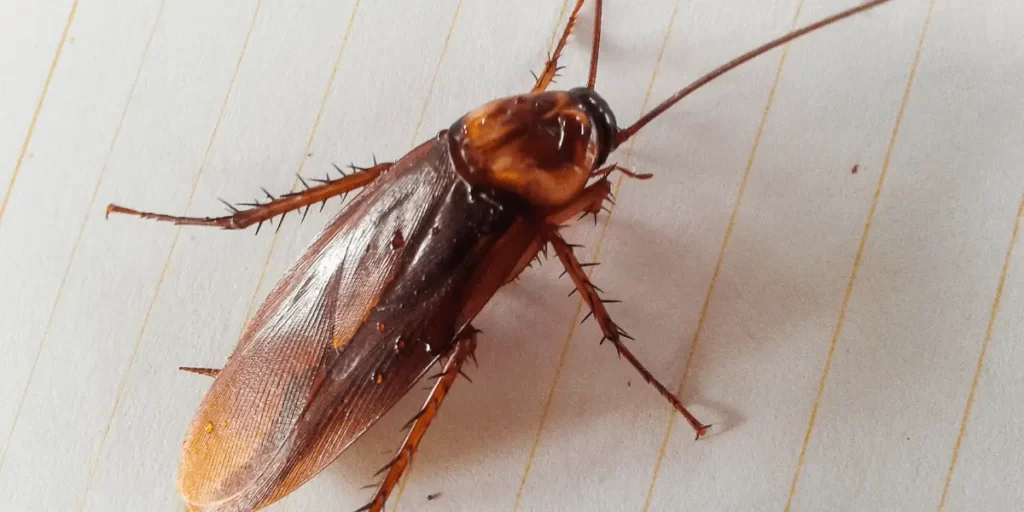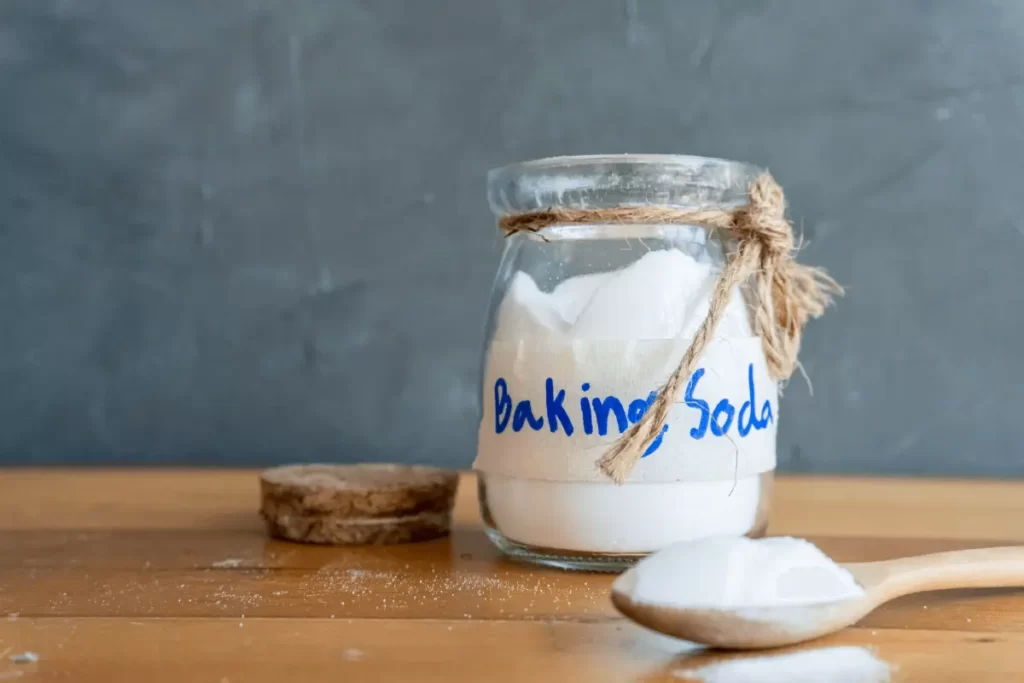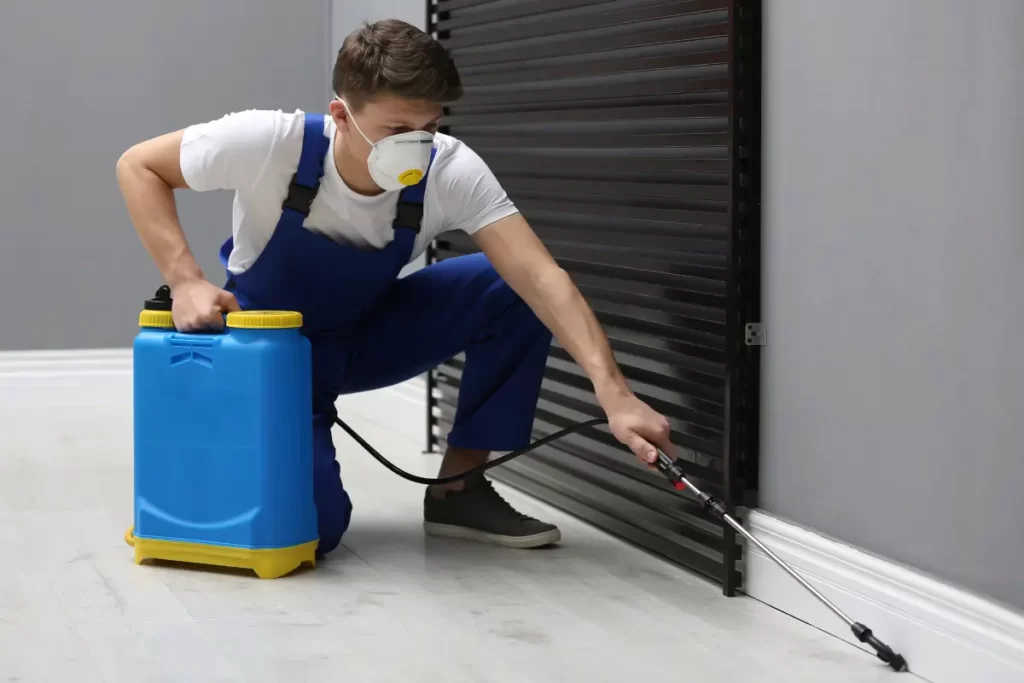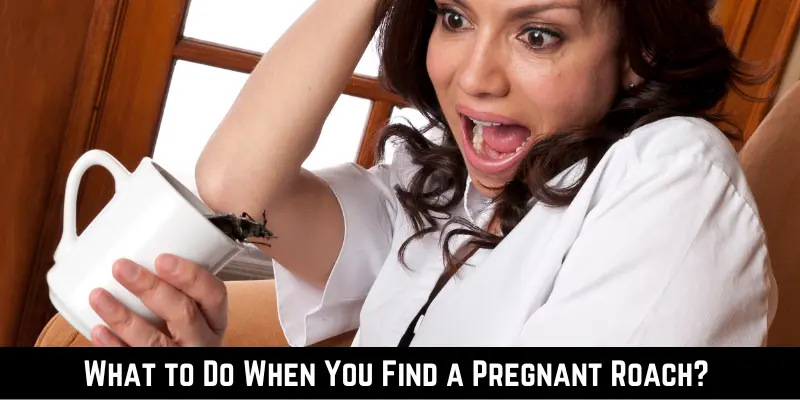Have you noticed multiple cockroaches after seeing a single cockroach wandering in your kitchen? It’s possible because the cockroach you have seen might be pregnant with a protrusion on its back. But what to do when you find a pregnant roach?
The first thing you can do after noticing a pregnant cockroach is to isolate it as soon as possible. Pack a cockroach in a plastic bag and seal it tightly so you can discard it outside your home. After that, thoroughly inspect the area and look for another pregnant cockroach to remove.
Have you found a pregnant cockroach in your home and want to remove it? Don’t worry; read the below guidelines to resolve the issue.
What’s the Appearance of Pregnant Cockroaches?

Cockroaches, like other insects, don’t have external signs of pregnancy. Although all female cockroaches undergo pregnancy, only those females considered pregnant carry their egg cases around them. Molecular Biology and Evolution states that cockroaches produce an egg case called an ootheca after mating.
The ootheca can vary in appearance depending on the type of cockroach, but it is normally a brownish, purse-shaped capsule. This pill-shaped protrusion resembles a little bean that remains attached to the female’s body. It has a hard cover that protects the eggs inside. One sac contains approximately 20 to 40 eggs that must grow over time.
The female places the ootheca in a protected spot, and the eggs develop within it. When the eggs are ready to hatch, the ootheca releases the nymphs. Cockroaches therefore lay their eggs and allow them to hatch outside of their bodies.
How Do Cockroaches Get Pregnant?
Cockroaches reproduce by oviparous reproduction, which involves the laying of eggs. The female cockroach lays eggs fertilized by male sperm. The fertilized eggs are then enclosed in a protective capsule known as an ootheca, which the female deposits in a hidden or sheltered spot.
The ootheca acts as a shield for the growing embryos. The eggs within the ootheca develop into nymphs after a set amount of time. A pregnant roach transports the egg case till the eggs hatch. This happens after about a month. After going through several molts, these nymphs eventually become adult cockroaches.
As the baby cockroaches grow, they require more breathing space. To accomplish this, they will molt, which requires inhaling excessive air until the exoskeleton breaks.
The Life Cycle of a Cockroach
The cockroach life cycle consists of the following stages.
Egg
Cockroaches begin their life cycle by laying eggs. As cockroaches are oviparous, their offspring grow outside the body. After laying the eggs, each female cockroach protects eggs with a protective sheet called an ootheca. The oothecae is a small, purse- or bean-shaped capsule that holds up to fifty eggs. The larger the egg case, the more eggs it holds.
Moreover, the number of eggs in oothecae varies among different species. A female roach develops one egg sac at a time but may generate ten or more over a lifetime. Typically, the ootheca is dropped or fastened to a hidden surface. The eggs grow inside the ootheca until they’re ready to hatch.
Nymph
Once the eggs hatch, the young cockroaches are known as nymphs. Nymphs lack wings and resemble tiny versions of mature cockroaches. As they molt and develop, their color progressively changes from white at hatching to black.
Cockroach nymphs go through numerous developmental stages (instars), molting each time they outgrow their exoskeleton. However, the amount of molts varies depending on the cockroach species. When roach nymphs molt, they appear white until their new outer covering forms. Remember, the cockroach is fragile during the nymph stage and seeks to remain hidden.
Adults
The third and the last stage of the cockroach life cycle is adulthood. Adult cockroaches have fully-grown wings and reproductive organs. When a cockroach “gets its wings” and reaches adulthood, it is ready to reproduce. They continue the life cycle by mating and laying eggs.
About 85% of nymphs can reach adulthood, and after molting, they start mating and continue the life cycle. However, a female cockroach can reproduce throughout its lifetime. Moreover, remember that adult cockroaches are more hardy and adaptable than nymphs.
How Can You Identify Different Types of Pregnant Roaches?
German and American cockroaches are the most common type of roaches found in homes or properties. Here’s how to spot them.
German Cockroaches

These cockroaches are the most abundant household pests. Their body color ranges from tan to dark brown, with noticeable parallel lines on the back. Female German cockroaches are darker than males and have a dark brown or tan egg sac, depending on their body color.
The cycle of a German cockroach consists of three stages: egg, nymph, and adulthood. This cycle consists of 100 days. After that, German cockroaches will be ready to reproduce. Pregnant German cockroaches frequently have a more rounded and swollen belly than males or non-pregnant females.
Moreover, some pregnant female cockroaches may have dark patterns on their abdomen, and they used to move slowly. All these characteristics will help you identify a pregnant German cockroach.
American Cockroaches

These roaches are the second most abundant household pests. Because of their fast adaptation, these cockroaches regularly infest houses, ships, and even industrial buildings. In general, female American cockroaches are bigger than male ones. They have more rounded, larger bodies. Moreover, they have small bean-shaped and dark brown eggs.
Their lifecycle also consists of three stages, including eggs, nymphs, and adults. According to the Insect Physiology, Reproduction, and Development Journal, each egg of an American cockroach hatch into nymphs within 35 days. Then, each nymph undergoes almost 14 molts to grow into an adult cockroach. Pregnant cockroaches have a significantly expanded belly, especially towards the back end due to egg cases.
Moreover, pregnant American cockroaches may exhibit distinct behaviors, such as seeking out dark spots.
How Does a Cockroach Reproduce?
Pregnant cockroaches can incubate their young either within or outside their bodies. The process of incubation varies by species; most cockroaches can produce a fresh batch of young every two months of adulthood. Below are some ways of cockroach reproduction.
Egg Cases
The female cockroach creates an egg casing called an ootheca, which contains numerous eggs. The ootheca is generally developed in a protected place, such as fissures and crevices to safeguard the eggs from environmental dangers. The eggs within the ootheca develop, and the female dumps or drops the ootheca in an appropriate spot when they are ready to hatch. The time it takes for the eggs to hatch varies according to the cockroach species.
German cockroaches transport their egg casings. A pregnant cockroach with an amber-colored grain of rice clinging to her rear end resembles a roach. On the other hand, brown-banded cockroaches are well-known for adhering their egg casings to the undersides of furniture and warm electrical appliances.
Ovoviviparity
In ovoviviparity, the eggs grow and hatch inside the cockroach’s body, giving birth to live roaches. Other cockroaches, such as the Dubia roach, are ovoviviparous. It means that instead of giving birth to an egg case, they keep it within their body. The eggs hatch within the pregnant cockroach after incubating inside her. After that, the mother gives birth to a living cockroach. The newborn roaches are so little and pale that they almost appear translucent.
What Does Finding a Pregnant Roach Mean?
Finding a pregnant cockroach means that a cockroach infestation is going to happen soon. German cockroaches can lay up to 40 eggs in a month. If you assume 20 are male cockroaches, then, you probably have 20 mature female cockroaches in a month.
Each of these can produce more than 40 young cockroaches. If this trend continues, you might have more than 16,000 cockroaches in your home in just four months. Although the rate of reproduction depends on the type of cockroach and the availability of food and water, an average female cockroach can lay up to 40 eggs.
As the cockroach starts multiplying, you’ll probably find more roaches roaming around your home. However, as their population grows, they find a limited area to hide, and as a result, most of them are forced out of their hiding spots. Therefore, you’ll start finding more roaches in your home.
Can You Kill a Pregnant Cockroach?
Yes, you can kill a pregnant cockroach because a pregnant cockroach means multiple cockroaches. Therefore, to avoid a large cockroach infestation, you should kill the pregnant cockroaches before they give birth and deliver more cockroaches to your home or property.
Although any home remedy can hinder the pregnant roach from being captured, you should apply the same procedure as you do for males or nymphs. Once you see a pregnant cockroach with an egg sac on its back, capture it in a bag, then release it outside your house. Remember, you should tightly seal the bag so that a cockroach may die of suffocation or can’t escape.
Though it’s not recommended to kill a pregnant cockroach, it’s the only solution you can try when all the remedies fail.
What Happens if You Step on Pregnant Cockroaches?
You may have probably seen videos of people stepping on a pregnant cockroach. All these videos show that if you step on a pregnant cockroach, there might be a swarm of roaches around. In reality, I didn’t find anything else, but this method would surely help in killing a roach and prevent the spread of cockroach infestation.
Stepping on a pregnant roach kills her and all of her incubated offspring. You might even stomp on a pregnant ovoviviparous roach without realizing it. Don’t worry; a nice, forceful stomp will dispatch the bug and its larvae.
It is also true for cockroach egg casings, which resemble little dried kidney beans or grains of rice. If you come across any casings, you can walk on them to kill inside nymphs. If you do, be careful to wipe your shoes afterward; otherwise, you may spread the cockroach’s infections wherever you go.
How Fast Does a Cockroach Infestation Spread?
The rate at which a cockroach infestation spreads depends on various factors, including the kind of cockroach, environmental conditions, and the availability of food and water. Cockroaches are famous for their rapid reproductive powers and flexibility, which can contribute to the rapid spread of an infestation.
A female cockroach can lay many eggs, and the time it takes for eggs to hatch into nymphs varies by species. Some species can develop from egg to reproductive adult in a few weeks. Furthermore, because cockroaches are nocturnal and frequently hide in cracks and crevices, detecting the early stages of an infestation can be difficult.
However, in ideal circumstances, a single pair of roaches can give birth to as many as 400,000 offspring annually. Given that the majority of roaches mature into adults in less than 35 days, you can see how quickly a place can get infested.
How to Remove Pregnant Cockroaches?
Below are some ways that you can follow to remove a pregnant cockroach.
Cockroach Killing Tools
Cockroach-killing tools are very effective in getting rid of roaches. These include traps and different types of baits. You can easily buy cockroach traps from your nearby markets. After buying the glue traps or roach motels, set them in suspected areas of cockroach presence, like the kitchen and toilets.
Moreover, you can also use gel baits to ward off a pregnant cockroach. Apply a small amount of gel in your cabinets, under or behind the appliances, shelves, and in cracks or holes. As the cockroaches come across them, they’ll get trapped and die.
Use an IGR to Stop More Baby Roaches
IGR is an Insects Growth Regulator that prevents cockroach nymphs from reaching the adulthood stage. So, by using IGR, you can prevent adult cockroaches, and that in turn prevents infestation.
An IGR spray is released into the air and absorbed by the roach’s outer shells. It doesn’t kill the baby roaches, but it makes them lethargic and feeble, making them unlikely to survive long in the harsh world you’ve created through sanitation and exclusion. Therefore, you can spray the IGR in the suspected areas of cockroach presence to stop baby cockroaches from growing.
Use Baking Soda and Sugar

Baking soda and sugar is a natural remedy to kill cockroaches. To kill a pregnant cockroach with them, you need to combine an equal amount of baking soda and sugar. For instance, if you use 1 tbsp of baking, you should take 1 tbsp of sugar.
After preparing the mixture, place a small amount of it in suspected areas of cockroach presence, including kitchen cabinets, toilets, corners, cracks, and holes in walls. Although baking soda is generally considered safe, keep it away from your children and pets.
Employ Raid Ant and Roach Killer

Raid ant and roach killer are effective pesticides to kill a pregnant cockroach. You can buy these pesticides from your nearby market. These pesticides directly affect the nervous system of cockroaches and cause brain death. Moreover, they dry the exoskeleton of cockroaches, leaving the inner structures vulnerable to injury.
However, if you don’t use them properly, some cockroaches develop resistance against them and don’t die. It usually happens when they more suitable place to hide in your house.
Squish Roach Eggs
Squishing a cockroach egg is another effective way to get rid of cockroaches. Whenever you find a cockroach egg in your home or yard, the first thing, you can do is to squish it with your shoes. In this way, the growing nymphs inside the egg die, and as a result, the adult cockroaches will not reproduce. If there are no adult cockroaches, there will be no pregnant cockroaches in your home.
Boric Acid

Boric acid is another commonly used and effective home remedy to kill cockroaches. You can make bait with boric acid. For this, mix an equal amount of boric acid and sugar and place this mixture along the suspected areas of cockroach infestation. As the cockroaches pass through these areas, they’ll die. However, remember to wear gloves before employing boric acid because it may cause skin irritation.
Use Diatomaceous Earth

Diatomaceous earth is also a non-toxic way to kill cockroaches. First, buy a good diatomaceous earth and spread a thin layer of it in areas where cockroaches are likely to travel. You can also use a bulb duster to apply diatomaceous earth in hard-to-reach places. However, remember that diatomaceous earth loses its effectiveness when gets wet, so reapply it frequently to maintain its effectiveness. Moreover, you should always wear gloves and masks while applying it.
Ask for Help from a Professional

If you tried all the above methods, but nothing works, ask for help from a professional pest control company for successful results. These people are taught how to utilize high-tech machinery and harsh chemicals to eradicate cockroach populations. Moreover, they know how to deal with pregnant cockroaches. They use large machines to cover the large area of your house so that they kill roaches in a single step. Above all, they are experts in their specifications and can protect you from danger.
Final Verdict
Cockroaches are the most dirty and irritating household pests, especially in the summer. Once they infested your home, it’s hard to get rid of them completely. However, the situation becomes worse when you have a pregnant cockroach in your house. A pregnant cockroach has an egg sac on its back, so you recognize it easily.
Whenever you see a pregnant cockroach, it’s recommended to remove it as soon as possible to prevent infestation. For this, you can either squish it with your foot or use a pesticide to kill them. However, if you find a large number of pregnant cockroaches, ask for help from a professional pest control company to remove them.
FAQs
References
Erxia Du, Shuai Wang, Yun-Xia Luan, Caisheng Zhou, Zhaoxin Li, Na Li, Shutang Zhou, Tingting Zhang, Wentao Ma, Yingying Cui, Dongwei Yuan, Chonghua Ren, Jianzhen Zhang, Siegfried Roth, Sheng Li, Convergent Adaptation of Ootheca Formation as a Reproductive Strategy in Polyneoptera, Molecular Biology and Evolution, Volume 39, Issue 3, March 2022, msac042,



